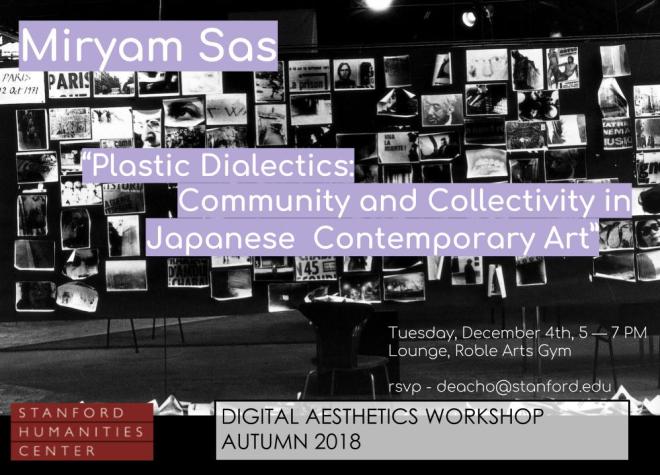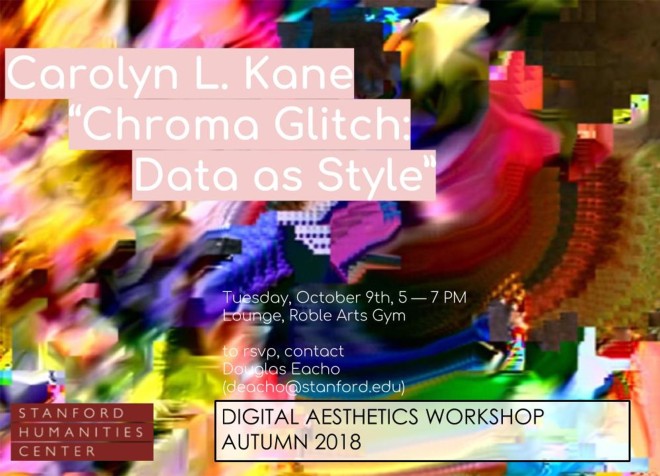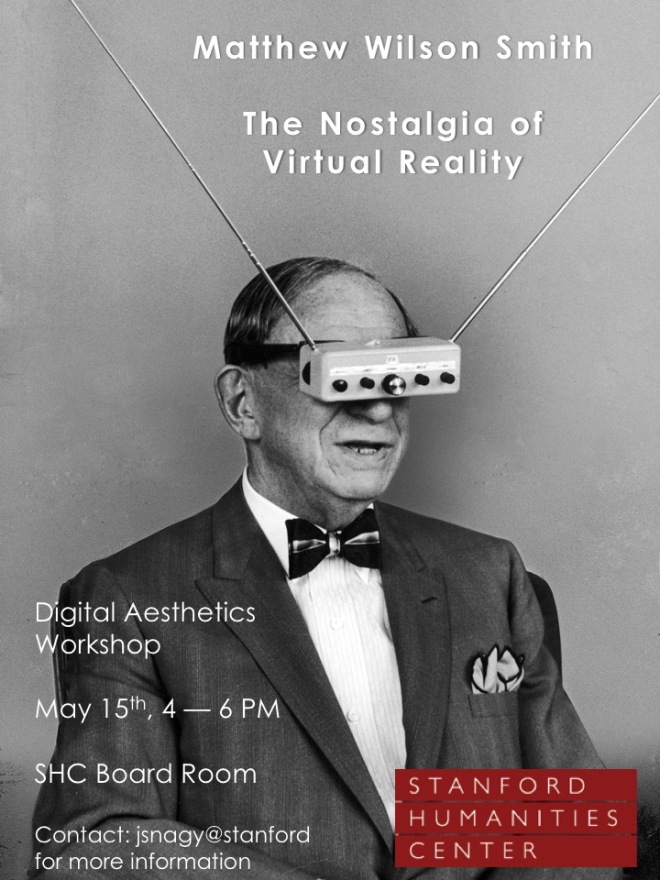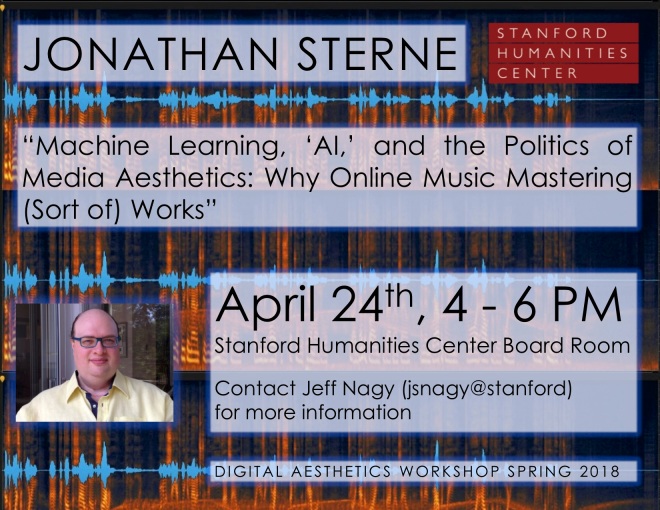
We’re pleased to announce the second event of the Digital Aesthetics Workshop for spring quarter. Please join us in welcoming James J. Hodge, who will present on “Six Theses on an Aesthetics of Always-On Computing” on Tuesday, April 30, 5:00-7:00pm PT. The event will take place in the Stanford Humanities Center Board Room, where refreshments will be served. Below you will find the abstract and bio. We look forward to seeing you there!
Zoom link for those unable to join in-person: tinyurl.com/27afjatd
Abstract:
This talk comes from my book project, “Ordinary Media: An Aesthetics of Always-On Computing.” The premise of the project is that the smartphone has become for many the signature technology and engine of experience in the twenty-first century. One of the project’s larger claims is that ambient givenness of smartphones in contemporary life has significantly reorganized the human sensorium and, moreover, has elevated the significance of experience at the level of the skin’s surface, or what the psychoanalyst Thomas Ogden terms “boundedness.” This talk attends to the ways in which this dramatic shift in the general orientation of experience entails a sea change in the general nature of aesthetics native and responsive to the always-on world. Discussing a variety of examples from film, literature, video, games, digital art, and vernacular aesthetic forms and genres, this talk explores six “theses” of aesthetics in this still-novel yet ordinary arena.
Bio:
James J. Hodge is Associate Professor in the Department of English at Northwestern University. His essays on digital aesthetics have appeared in Critical Inquiry, Postmodern Culture, TriQuarterly, Film Criticism, and elsewhere. He is the author of Sensations of History: Animation and New Media Art (Minnesota, 2019).








